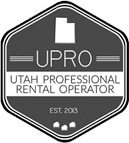2015 Salt Lake City Rental Market Forecast Investor’s Guide
Today, we’re talking about the rental market forecast for 2015 in the Salt Lake City valley. Anyone who lives in the area simply needs to look around and it’s easy to notice all of the cranes. Those cranes are constructing a number of multi-unit buildings. That’s good if you’re looking for a rental but not so good if you own rentals.

Multi-Unit Landlords
Ultimately, the additional inventory that this new construction produces might have the potential to drive down the price you can get on the units in your own building. Investors need to take that into account. If you have a smaller building with 10 or 12 units, make sure you concentrate on making your building appealing to potential tenants. Take good care of the property’s exterior and make sure the inside is updated and looks good. When you have a vacant unit, you’re going to have some competition for tenants. Make sure people will want to live in your property. Keep it well maintained and provide a lot of amenities such as a playground or a pool.
Single Family Homes
In the single family market, we don’t anticipate seeing any big changes throughout 2015. In Salt Lake City, there is always a strong demand for single family houses, especially those that are in good shape. Take care of the inside of the home, and when it’s vacant you’ll be able to rent it out at a good price without a problem.
This is a brief overview of this year’s rental market. If you’d like some more in depth analysis, please contact us at Advanced Solutions Property Management, and we’d be happy to tell you more.









